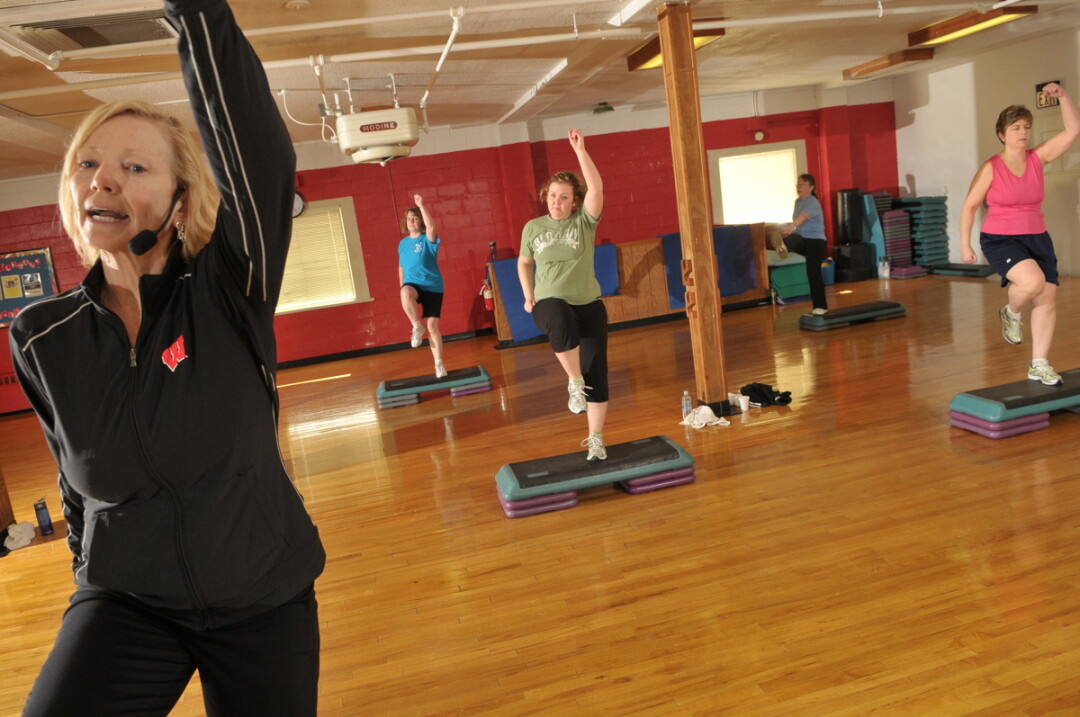Don't Let the Wintertime Blues Win
how to stick to a workout routine throughout the colder months
Megan Hosely, photos by Andrea Paulseth |

With 2017 giving way to 2018, many of us resolve to spend more time in the gym. However, more often than not, those resolutions quickly fade. Some give up because of lack of time to actually work out, and others throw in the towel because they aren’t seeing results fast enough.
Jamie Hoover, healthy living director at the Eau Claire YMCA, said in the past, the YMCA has experienced a “big boom” around the holidays: The weight room is busy for the first few weeks of the New Year, but then numbers start to drop and people phase out of the workout area.
“In the past, people would look at exercise as a punishment. But now, people are looking at exercise as a preventative measure.” – Jamie Hoover, Eau Claire YMCA
In recent years, Hoover said he’s seen the weight room stay consistently busy longer, until March or April. The change, he said, could be because of a shift in perspective.
“In the past, people would look at exercise as a punishment,” Hoover said. “But now, people are looking at exercise as a preventative measure.”
In order to combat the tendency to phase out of an exercise plan, Hoover said he encourages his clients to focus on “SMART” goals: specific, measurable, achievable, realistic, and timely. Hoover also said that setting smaller, more attainable goals is beneficial and keeps his clients more focused.
“When it comes to working out,” he said, “it takes about six to eight weeks for the body to adapt. And people don’t usually see results until about 12 weeks after they start working out.”
In addition to setting goals, Hoover said he encourages people to ask themselves how they feel after they complete a workout and to let that feeling propel themselves forward.
“We want people to do what they want to do with their lives, whether that be play with their kids or anything else, and we want them to be able to do it healthier,” he said.
Hoover said a major benefit to exercising is the release of endorphins, triggering a positive feeling in the body following a workout. This can be especially helpful during the winter months when seasonal affective disorder typically sets in.
According to Mayo Clinic, seasonal affective disorder is “a type of depression that’s related to changes in seasons. … Your symptoms start in the fall and continue into the winter months, zapping your energy and making you feel moody.”
While exercising doesn’t cure seasonal affective disorder, exercise can provide an outlet for people to relieve stress and to clear their minds.
The act of working out can be stressful for some, especially if they haven’t found anything they enjoy doing. Sometimes, when people think of working out, Hoover said, they think of spending time on the treadmill or the elliptical. While those are ways to break a sweat, he said, there are many other outlets to try as well, such as sports leagues, lifting weights, or attending group exercise classes.
“Group exercise classes are designed to move multiple parts of the body,” Hoover said. “People can take those movements and build their path of wellness around that.”
Mixing up a workout routine by adding a day of weights or going to a new group exercise class can keep people motivated and engaged in their workouts. The more engaged and motivated they are, the less likely they will quit the habit.
Another way to stick to a workout goal is to find an accountability partner. While accountability partners offer a lot of benefits, the main benefit is they offer a line of motivation.
“You’re way less likely to skip a workout session if you’re supposed to meet someone, or if someone is already at the gym waiting for you,” Hoover said.
Even if people takes these basic steps to improve their fitness journeys, Hoover said he’s quick to tell his clients not every path is the same, and there are different definitions of both success and leading a healthier lifestyle. “Everyone’s journey is different,” he said. “You have to be willing to learn and to find what you enjoy.”




















